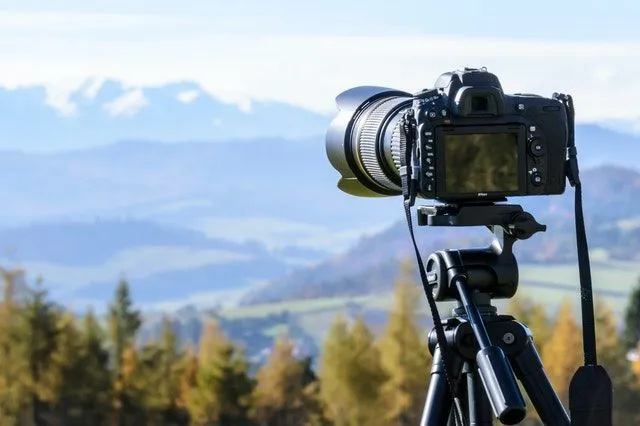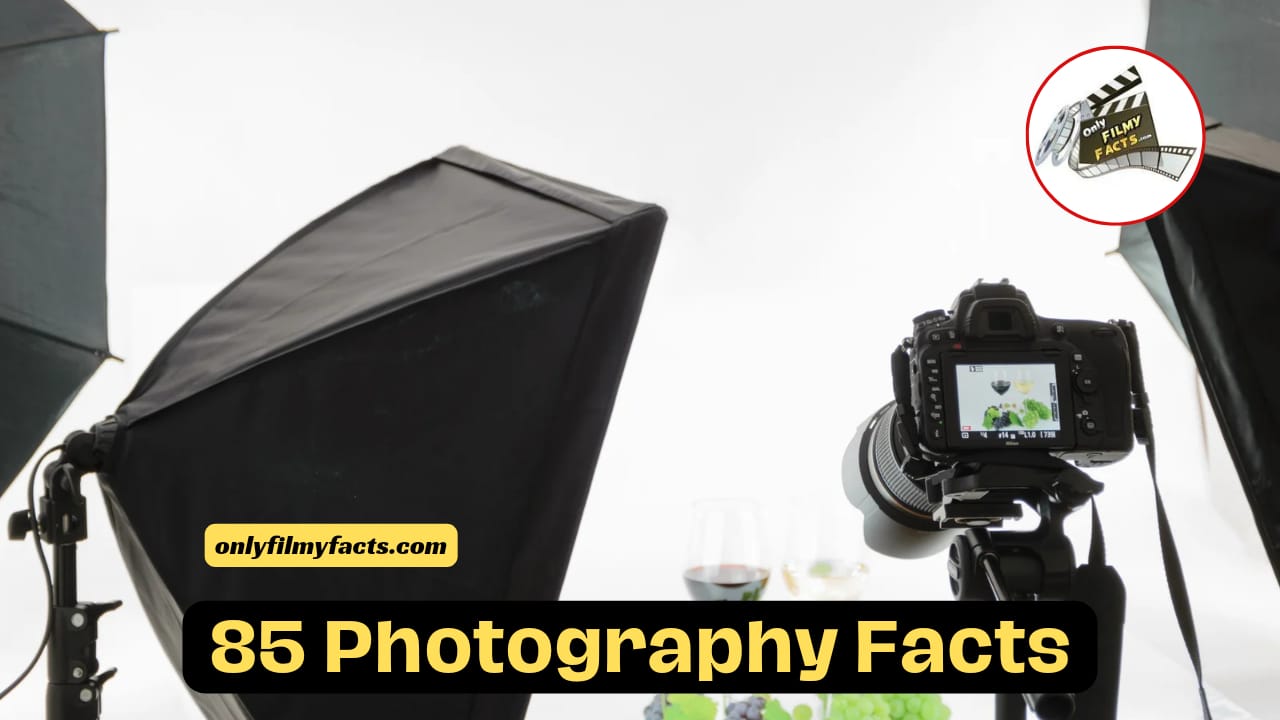Photographer: Many of us can share an opinion on what photography means to us as an individual, but in a literal sense, it is an art, practice, and application of creating durable portraits by recording light through the means of photographic film or image sensor.
During the infancy stage of photography, it is seen that people didn’t smile in old photos as people have to hold a straight face and look at the camera for hours. As photography was in early-stage development and the cameraman had to endure ridiculously long exposure, people looked unhappy.
Photography is a science and art of creating durable images and is employed in various fields such as photolithography. It is mainly used for video production, art films, hobbies, mass communication, and recreational purposes. Typically, the photographic process is either done chemically by employing a light-sensitive material like photographic film or electronically using an image sensor. Development of these latent images into visible images occurs chemically, either negative or positive. Read on to discover exciting photography facts.
History Of Photography
A French inventor Nicéphore Niépce produced the first permanent photoetching in 1822. After multiple failures, he succeeded in 1825 and later discovered the earliest surviving photograph from nature, ‘ View from the Window at Le Gras.’ It had approximately eight hours of exposure time. The history of photography is quite fascinating and made a significant effect on the modern world.
The word ‘photography’ came from a Greek word split into two words, ‘ photos’ and ‘graphe,’ which together means ‘drawing with lights.’
The inventors Nicéphore Niépce, Louis Daguerre, and Henry Fox Talbot first used the word heliography, photogenic drawing or talbotype or calotype, and daguerreotype instead of photography.
Queen Victoria used the term ‘photo’ for the first time.
The term ‘selfie’ went viral in 2002 because of a drunk Australian.
The first pinhole camera was invented by Arab physicist Ibn al-Haytham (Alhazen). Indeed, it was the first camera to be invented in the history of photography.
The discovery of camera obscura took place in ancient China by Chinese philosopher, Mozi.
The earliest surviving photograph from nature, called ‘View from the Window at Le Gras,’ was discovered by Nicéphore Niépce.
The first photo was taken through a means of Camera Obscura which means ‘dark chamber’ in Latin.
Darkroom is often lit by a red or amber colored light which is often confused with pitch black.
The first-ever pinhole camera is dated back to the 4th or 5th century.
In 1925, photography manufacturer giant Leica introduced a 1.4 in (35 mm) film format in still photography.
The first SLR camera with 1.4 in (35 mm) film format, the Kine Exakta, was introduced by Ihagee in 1936.
The world’s largest photographic equipment manufacturer in 1890 was Kodak.
The French invented the era of fashion photography.
The world’s first fashion magazine was ‘Le Mode Practique.’
In the 1860s, William H. Mumler was known as ‘Ghost Photographer’ because he created the appearance of dead people in his photos.
The most viewed photograph in photography history is the default wallpaper for Windows XP named ‘Bliss.’
The very first archaeology photo ever taken was a photo of Machu Picchu.
The first photo of a total solar eclipse was clicked in 1951.
First aerial photography was done by a French inventor Gaspard-Félix Tournachon in 1858.
The first negative was created almost 200 years ago by Henry Fox Talbot.
Chemicals used to develop photographs in the initial days were poisonous and fatal if consumed.
Remember when cameras were attached to falcons for Planet Earth in 2004 by the BBC? Well, it was not the first time. First pigeon photography was created in 1907.
The first known photograph of a tornado was captured by an unknown photographer on August 28, 1884.
The first motion picture was captured to see if all four hooves of a horse are simultaneously off the ground when it is in motion.
Earlier, mothers used to dress up as chairs to keep children still for long hours.
In the 1800s, the most popular subject in photography was dead bodies to honor the deceased person’s memories.
Portraits, landscapes, and still lives have been popular photography subjects since the 19th century.
In 1925, the first photo booth was created in New York.
Types Of Cameras
A camera is a device used for producing images or image sequences from footage of the physical world. The market homes many different cameras from all over the world. Sometimes, it is confusing which one to opt for. Knowing the categories of cameras will give you the confidence to decide what to buy. It doesn’t matter if you’re a novice, professional, or hobbyist. Four out of every ten people in the world own a digital camera.
The first camera, called Kodak, came into the market in 1888.
Often referred to as a point-and-shoot camera, it is also known as Compact Camera, which belongs to a ’90s fanny pack.
The First Kodak camera was a handheld box camera that contained a 100-exposure roll of film.
Zoom compact cameras are slightly different from standard ones as they have a better zoom lens installed.
Zoom compact camera ranges are 0.8-11.8 in (28-300 mm), which includes HD recording with a minimum of 12 megapixels.
Advanced compacts are lightweight and quite expensive. It also provides higher resolution pictures and includes interchangeable lenses.
Professional photographers or aspiring videographers opt for DSLR cameras with an optical viewfinder, larger sensors, and customizable settings.
A more compact substitute to DSLR is mirrorless cameras which automatically limit camera shake and provide incredible quality images and videos.
An SLR camera is a single-lens reflex type that typically uses a mirror and prism system.
Adventure cameras are small, lightweight, and is weatherproof.
Like adventure cameras, 360-degree cameras can capture fascinating footage using back-to-back lenses and can be put on drones, helmets, bikes, or anything for that matter.
Hasselblad is the leading manufacturer of medium format cameras.
For outdoor filming or rough conditions, adventure cameras were used.
Traditional film cameras or digital cameras give real-time photos and don’t involve developing costs.
The first digital camera weighed four times more than the modern DSLR camera.
Bitumen of Judea, a type of asphalt, was the first photography paper.
The largest SLR lens weighs more than 560 lb (254 kg).
The first panoramic camera, Al-Vista, was produced in America in 1898.
In 1975, Steven Sassoon invented the first digital camera with only 0.01 megapixels.
The most expensive camera, Leica 0-Series, was sold at an auction in Vienna for $2.8 million.
Twelve of the Hasselblad cameras used on the Apollo 11 mission by Neil Armstrong was the first camera to take the first picture of the moon. However, they are still on the moon.
In 1935, the first Japanese camera was made with the lens by Nikon and the body by Canon.
Kodak doesn’t mean anything, unlike all other camera names, and is made up.
A photojournalist from Mumbai, Dilish Parekh, has the most extensive camera collection of 4,425 antique cameras.
Daguerreotype, created by Louis-Jacques-Mande Daguerre, was the first image recording device.

B&W Photography Vs. Color Photography
Over time, photography became a respectful art form, and people became habitual to black and white photography. But as technology evolved, photography with colors became easily attainable. However, black and white photography heavily depends on fundamental contrast, proper exposure, and composition to create meaningful images.
Color photography was introduced in 1930. Until then, b&w photography was used.
Until the ’90s, some countries’ photos were commonly printed in b&w due to the high price of color ink.
It is determined that people take over a trillion photos every year (1,000,000,000,000).
Black and white photos are also called monochrome photography because they have different gray tints.
To lighten, darken and saturate photos, dodge, burn, and sponge techniques were used in the darkroom.
There are 80 genres of photography and at least ten sub-genres.
Digital photography is better for the environment than the traditional one.
The first color photograph was taken in 1861 through red, green, and blue (RGB) filters by a Scottish physicist named James Clerk Maxwell.
According to statistical analysis, two out of every ten photos are taken through a digital camera are printed on paper.
The earliest surviving photograph took eight hours of exposure.
A panorama picture captures different points in time.
During the Victorian Era, a headless portrait was invented.
The first color photograph underwater was taken in 1926 in the Gulf of Mexico.
The first flash was created using the explosion of potassium chloride and aluminum.
At least 300 million photos are uploaded to Facebook every day.
In 1987, ‘ImagePro’ photoshop was created by the Knoll brothers.
The Wiki Loves Monuments 2012, the largest photography competition, had 353,768 entries.
The First HDR image was of the sky and the sea combining the two into one picture.
Famous Photographers
When it comes to photography, inspiration plays an important role and can be a tough nut to crack. Even the greatest names in the photography industry manipulate or edit their photos. Photographers are known for their style, passion, and dedication. Some of these best photographers, like Jimmy Nelson, Rehahn, Lee Jeffries, Erik Almas, and more, have an excellent reputation in the history of photography.
The most iconic name in the field of photography is Ansel Easton Adams, who is also known as ‘Supreme Master of Landscape Photography.’
Many of Ansel Adam’s famous prints were manipulated by the dodging and burning technique.
Ansel Adams hiked Yosemite National Park for a whole day to take one photo.
Louis Daguerre captured the first photo of a person in 1828. It was unintentional as he wanted to capture the Boulevard du Temple, Paris on celluloid, but captured a man standing in the street instead.
‘The Rhine II’ captured by Andreas Gursky was the most expensive photo auctioned for $4.33 million in 2011.
The First Single Lens Reflex (SLR) camera was invented by great photographer Thomas Sutton, who took the first color photograph.
The most viewed photo ‘Bliss’ was captured by Charles O’Rear in Sonoma, California, in 1996.
James Wallace Black’s aerial photo of Boston is the oldest surviving photo as the first one by Felix no longer exists.
First time-lapse photography was done by English photographer Eadweard Muybridge in 1878.
In 1839, the first selfie was taken by Robert Cornelius.
The human eye equivalent of f-stop is f/2 in dark conditions and f/8.3 in bright conditions.
William Longley and National Geographic staff photographer Charles Martin took the first underwater color photograph off the Florida Keys in Mexico.
Robert Capa was the only Hungarian photographer who has covered five wars photography worldwide.
FAQs
Q: What is special about photography?
A: Photography allows you to capture memories and create images of special events, places, and times and share them with friends and family long after it’s done.
Q: Who invented photography?
A: The world’s earliest photograph was taken in 1826 by French inventor Joseph Nicéphore Niépce. He is considered the inventor of photography and the world’s first photographer, along with Felix Benedict Herzog and Frederick Scott Archer.
Q: What is interesting about photography?
A: Photography helps in capturing moments of importance and beauty. It grants us the ability to immortalize moments and connect with our loved ones.
Q: Why is photography fun?
A: Photography is a fantastic way of preserving one’s important milestones. It also provides an opportunity to share people’s most memorable moments with loved ones and friends. It is fun as it makes us travel to new places and learn new photography facts.
Q: Why is photography interesting?
A: Photographs add so much value to our lives and help us learn and grow as people. It also allows us to engage and have fun while traveling.
Q: Is photography a good job?
A: Commercial photography is one of the highest-paying photography jobs. With a boom in media, fashion, and advertising, digital photography has grown as a thrilling career option.
Q: Who is the highest-paid photographer?
A: The highest-paid photographer in recent times is Morgan Norman, a prolific commercial photographer.
Q: What kind of photography is in demand?
A: Freelance photography is the most popular career choice amongst photographers. Today, landscape, architectural, wildlife, fine art, and monochromic photography are highly demanded.

